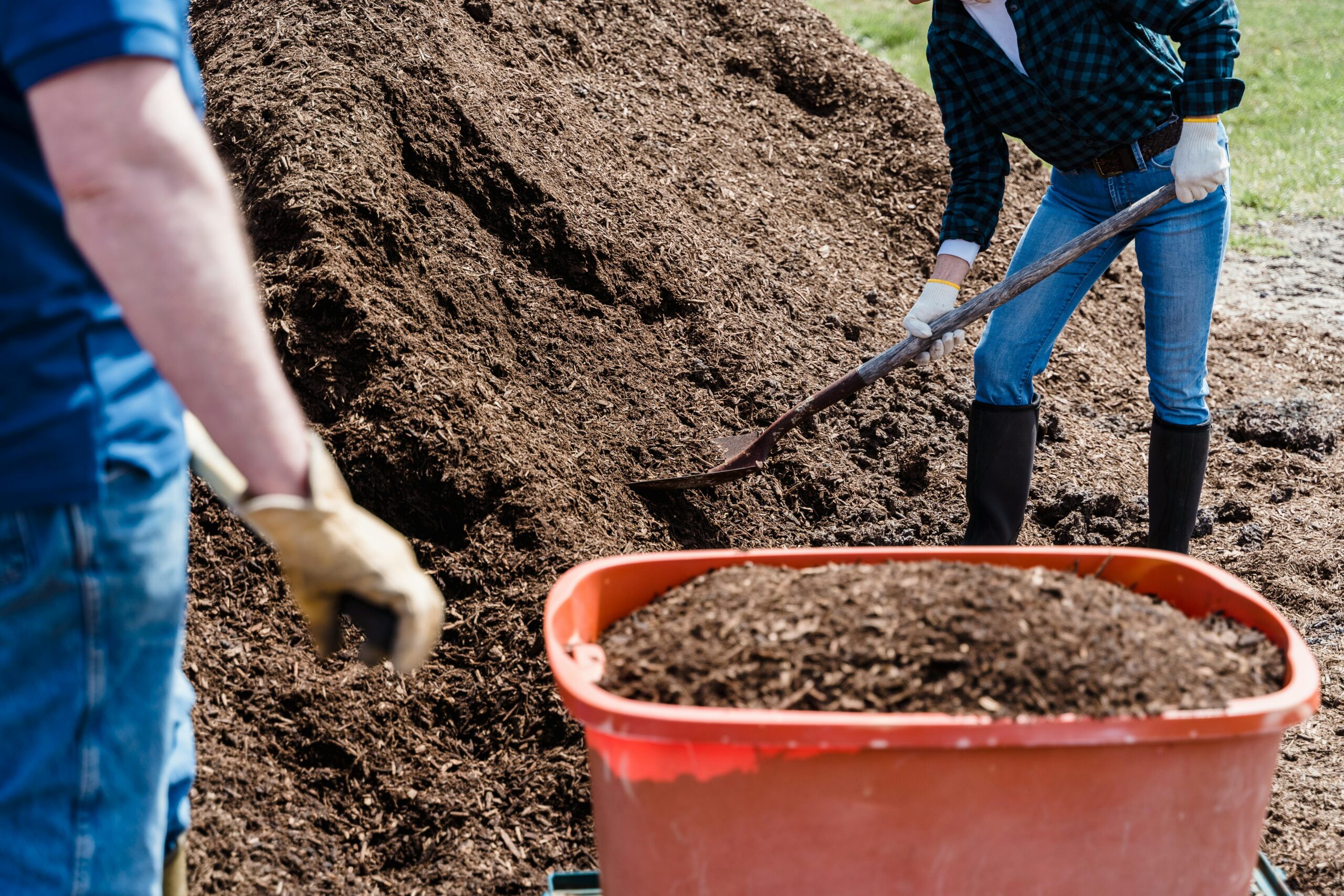Human Composting Is Rising In Popularity As a Pollution-Free Way To Die

As society grows more environmentally conscious, a transformative approach to life’s final chapter is quietly gaining ground. Human composting, a method that converts our physical remains back into the earth, is emerging as a profound alternative to traditional burial and cremation practices. This pollution-free option not only promises to reduce our ecological footprint but also offers a way to nourish the planet long after we’re gone. But what drives this shift towards such an unconventional choice? And how exactly does turning into nutrient-rich soil benefit the earth and future generations?
What is Human Composting?
Human composting, also known as natural organic reduction or Terramation, is an innovative approach to end-of-life care that transforms human remains into nutrient-rich soil. This process offers a sustainable alternative to traditional burial and cremation methods, aligning with eco-friendly values by returning essential nutrients to the earth.
The human composting process begins by placing the body in a specially designed vessel, surrounded by organic materials such as wood chips, alfalfa, and straw. These materials not only support the decomposition process but also create an optimal environment for naturally occurring microbes to thrive. Over several weeks, these microbes break down the body’s tissues, converting them into high-quality compost. The process is meticulously managed to ensure it is both safe and respectful, maintaining the dignity of the deceased while facilitating the natural breakdown of the body.
The vessel is kept at a specific temperature range (between 131°F to 160°F), which helps accelerate decomposition while ensuring safety by eliminating pathogens. This controlled environment mimics the natural decomposition processes found in nature but occurs at a much faster rate. Typically, the transformation from body to soil can be completed in about 30 to 60 days, depending on the specific method and conditions set by the composting facility.
Once the composting process is complete, the resulting soil is rich in nutrients and can be used to nourish gardens, forests, or any natural spaces. This final product not only helps enrich the soil but also sequesters carbon, contributing to environmental health. Families may choose to use the soil to plant trees or flowers as a living memorial, or donate it to conservation efforts, continuing the ecological cycle of life and death.
Human composting is a profound way to honor a loved one’s memory by giving back to the earth, supporting life even after death, and fostering a tangible connection with the natural world.
The Muckenhoupt Family’s Journey
When Laura Muckenhoupt drove home from a Washington state facility with her family, she carried with her something unexpected—hope. Her 22-year-old son Miles had passed away, and in the absence of his physical presence, Laura felt his essence in a new form: the hundreds of pounds of nutrient-rich soil that were once his body. As she reflected on the journey, a thought emerged: “We’re going to grow him.”
This idea of transformation, of continuing to nurture life even in death, is at the heart of human composting. It’s a process that mimics the natural decomposition that occurs on a forest floor but accelerates it in a controlled environment. According to Tom Harries, CEO of Earth Funeral, “What we’re doing is accelerating a completely natural process.”
Human composting is more than a personal choice—it’s a profound shift in how we think about our impact on the planet, even after death. Unlike traditional burial practices, which often involve embalming chemicals, or cremation, which emits significant carbon dioxide, human composting offers an alternative that is gentle on the Earth. The process transforms the body into fertile soil, providing a sustainable and environmentally friendly end-of-life option.
This growing trend represents a movement toward reimagining how we can honor life, not just through memory, but by giving back to the planet that supported us. For families like the Muckenhoupts, it’s a way to transform grief into growth and legacy into renewal.
How Miles’ Soil Continues to Tell His Story
 Image source: Shutterstock
Image source: Shutterstock
For Laura Muckenhoupt, the aftermath of her son Miles’ passing was an overwhelming haze of grief. Yet amidst the pain, the transformation of his body into soil offered an unexpected source of comfort and connection. This soil, rich with new possibilities, became a symbol of Miles’ enduring presence and a way to carry his spirit forward.
Since then, Miles’ soil has embarked on journeys he likely would have cherished. It has been used to grow passionfruit trees in Portugal, ferns in Hawaii, and even traveled as far as Indonesia and Tuscany. For Miles, a dancer who found joy in the outdoors, this continuation of life through nature feels deeply fitting.
Closer to home, the soil has been used to plant a rosebush in the family’s garden. Much of it also resides in a planter in the backyard, nestled beside Miles’ favorite hammock chair. Each time the rosebush blooms, Laura sees it as a small, beautiful visit from her son. “It’s such a gift,” she said. “And it seems like a small visit from him, and it’s gorgeous.”
Unlike cremation or burial, Laura believes composting offers something unique—a continuation rather than a conclusion. “With cremation or burial, you have had your ceremony, and then the story ends,” she explained. “With soil, the story is just beginning.”
Through human composting, Laura and her family have found a way to transform grief into growth, allowing Miles’ legacy to thrive in the earth and the beauty it nurtures.
A Growing Movement: Human Composting Gains Momentum
Human composting, once a niche practice, is quickly gaining popularity as a meaningful and eco-conscious end-of-life option. It has been legalized in 12 U.S. states, with bills pending in eight others, reflecting a broader cultural shift toward sustainability and environmental responsibility. For many, this choice represents their final contribution to the Earth—an act of care for the planet and future generations.
Tom Harries, CEO of Earth Funeral, highlights the motivations of those choosing human composting. “This is their final act on Earth,” he explained. “They’re thinking about kids and future generations.” This forward-thinking mindset resonates strongly with people who are passionate about the outdoors, the environment, and leaving a legacy of care and preservation.
Kimberly Cooley-Reyes is one such individual, finding deep peace in knowing her end-of-life choice aligns with her values. Her story is part of a larger trend of individuals embracing human composting not only as an alternative to traditional burial or cremation but also as a way to remain connected to the planet they loved during their lifetime.
This growing movement isn’t just about sustainability—it’s about rethinking our relationship with life, death, and the Earth itself. As more people choose human composting, it signifies a collective shift toward a future that prioritizes harmony with the natural world.
 Image source: Earth Funeral Website (A view of the conservation land in Olympic Peninsula where Earth Funeral sends the remaining soil.)
Image source: Earth Funeral Website (A view of the conservation land in Olympic Peninsula where Earth Funeral sends the remaining soil.)
Why Human Composting Faces Pushback
Human composting faces several obstacles that must be addressed to gain broader acceptance. One significant challenge is legal and regulatory hurdles. While the practice is legal in 12 states, many regions lack a clear framework to govern this new method of body disposition. This uncertainty makes it difficult for providers to operate and expand, requiring dedicated advocacy and public education to inform lawmakers and communities about its environmental and practical benefits.
Cultural and religious resistance also poses a challenge. For some, the idea of turning human remains into soil feels inconsistent with traditional rituals for honoring the dead. Certain religious groups have expressed concerns that human composting lacks the dignity traditionally associated with burial or cremation. Overcoming this resistance requires thoughtful dialogue and outreach to show how composting can align with values of reverence and care for both the deceased and the Earth.
Finally, the traditional funeral industry and public misconceptions act as barriers. Human composting disrupts established business models centered around burial and cremation, which may lead to resistance from funeral homes and crematoriums. Additionally, many people misunderstand the process, fearing it is unsafe or undignified. Public awareness campaigns are crucial to dispel these misconceptions, educate communities on its environmental benefits, and present it as a compassionate and sustainable option for honoring loved ones.
A New Paradigm for Death Care
As human composting continues to carve a path through legal landscapes and cultural perceptions, its role in reshaping end-of-life choices remains profound. This practice not only offers a return to the natural cycles of growth and decay but also stands as a testament to a collective shift towards sustainability. By choosing human composting, individuals make a final gesture of environmental stewardship, allowing their legacy to nurture the future.
Human composting encapsulates a vision where death is not an end but a transformation—a nourishment that fosters new life. As this method gains acceptance and overcomes its challenges, it promises to integrate more deeply into societal norms, offering a meaningful, dignified, and eco-conscious alternative to traditional burial methods.
As we look forward, the promise of human composting lies not just in its ability to reduce our ecological footprint but also in its potential to change our relationship with the very concept of death. It invites a future where each person’s final act contributes to the health and vitality of the planet, turning mourning into regeneration and loss into sustainability.
Featured Image Source: Pexels
Loading...






